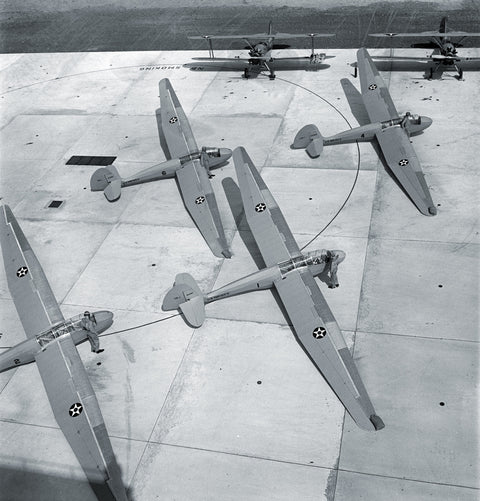
Silent Wings
Marines prepare for glider training at their training base on Parris Island, South Carolina, in May 1942. The gliders are examples of the Schweizer LNS-1 and the Marines belong to Glider Group 71. The biplanes are the Naval Aircraft Factory N3N-3s that towed the gliders into the air. The photographer was Alfred Palmer, who was at Parris Island on assignment for the Office of War Information.
The LNS-1 was a two-seat sailplane with a length of 25 feet and a wingspan of just over 52 feet. It was the military version of a sailplane made by Schweizer Aircraft Company, which was founded by three brothers and based in Elmira, New York. At one point the Schweizers worked out of the family barn and then in the basement of a knitting factory. Their first glider, the SGP-1, debuted in 1930. They introduced the 2-8 in 1938 and this became the basis for the LNS-1, although the military had them manufactured from wood instead of war-restricted metals.
The U.S. military had been scrambling to catch up to the Germans with glider assaults, leading to the creation of the Marine group, the idea being that the Leathernecks could use the unpowered craft as an element in amphibious assaults. However, Marines were primarily engaged in the island hopping campaigns in the Pacific, where glider assaults were determined to be not practical. The glider program was soon canceled.
historynet magazines
Our 9 best-selling history titles feature in-depth storytelling and iconic imagery to engage and inform on the people, the wars, and the events that shaped America and the world.
